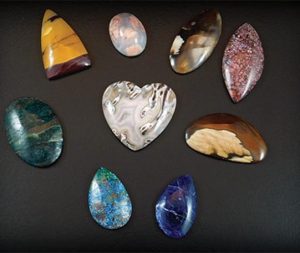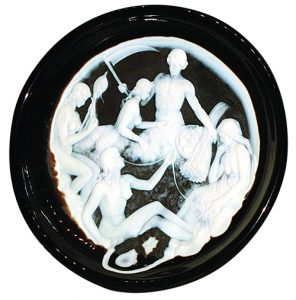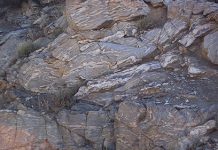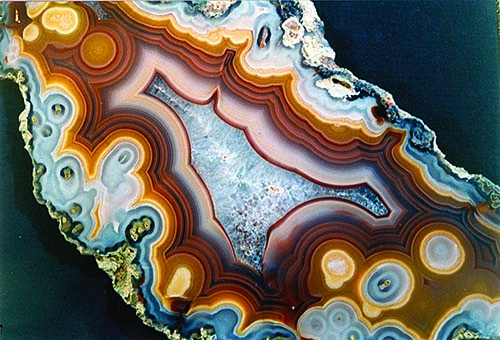
By Bob Jones
It’s happened! Agates are finally receiving the recognition in the crystallized mineral community they deserve.
Fine agates are appearing more and more at the major mineral shows. Some seasoned dealers known for fine minerals are now offering a choice selection of agates. For the last three-quarters of a century, with the discovery of new agate fields, fine and amazingly colorful agates have had an impact on the agate market. Now they are breaching the fine mineral market.
Popularity Inspiring Dealer Offerings
Among lapidary collectors, fine agates have always been popular but were often ignored by crystallized mineral collectors and dealers. Some dealers in fine minerals are now bringing agates into that market, and this will have a positive impact on the value of fine agates.
For too long fine agates have been relegated to smaller regional or local shows, seldom being seen and exhibited at the world’s major shows. A few outstanding agates have achieved recognition and high value, but they have been the exception. A good example of this is Brad Cross’s Hooded Owl agate featured in magazines and books. It has been exhibited at major shows but this has only happened to agates with rare internal images.
If you take a serious look at many agates you’ll realize finer agates are as unique as fine minerals. Each agate has an eye-catching pattern. Beautifully banded and internally patterned agates should have the same high regard as fine minerals. Show promoters and clubs that host large mineral shows should recognize this and include agates and lapidary stones in their special exhibit areas. The few times I’ve seen this happen interest in such exhibits is high, and it has a positive impact on agate sales.
The best example I’ve seen recently took place during the 2019 Tucson Gem and Mineral Show. The noted mineral dealer Kristalle, of Laguna Beach, California, known for decades as a major fine mineral dealer had acquired a superb collection of cut and polished agate sections, and exhibited them at this famous show. The reaction of the crowd was a pleasant surprise to everyone. Visitors spent time admiring each agate and enjoying their colorful beauty. Mineral dealers spent extra time studying the agate exhibit and some came away thinking maybe they ought to consider adding agates to their inventory.
Research and References Plentiful
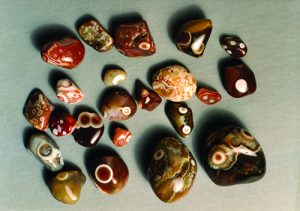
Collectors of fine agates have always tried to raise the interest in agates among mineral collectors. Excellent books on agates abound. I have a whole series of books in my library including the superb Agates I and Agates II, published by Bode, Halltern, Germany. I use them frequently when preparing an article on agates. Such books will expose collectors to a whole new world of collecting.
If you look at the history of agates versus minerals, a couple of millennia ago agates were treated with high regard and treasured far more than crystal specimens. Agates are colorful, hard, suited for gem and utilitarian use while crystals were seldom understood and seemed to have no practical use unless they contained a useful metal. A few minerals like malachite could be used either as mascara or in pottery making. Otherwise, crystallized minerals exposed during mining were considered waste and seldom preserved save for scientific use.
Agates, on the other hand, often exhibit intense colors in artistic patterns that make each agate unique and precious. Since before Roman times, people have treasured the beauty of agates using them in a score of ways. In carvings or adornments, agate gemstones are often incorporated and used artfully in furniture in stately homes. At the same time crystallized minerals, except for gold, silver, and metallic minerals were thought to have value or be worthy of scientific study. In some mining areas, crystals were even suspected as the work of goblins or spirits, used to distract or mislead miners.
Reversing the Roles
Colorful agates were so popular they were eagerly mined, sought, and valued among the upper classes of society. The agates of Sicily and Idar-Oberstein had an intrinsic value crystallized minerals did not have. All of that to say that agates have been popular and valued far longer than crystallized minerals.
Of course, gem crystals, gold, and silver have always been valued, however, for sheer desire of ownership, coupled with utilitarian uses, agates have far outshined crystallized minerals throughout history. Yet, it was crystallized minerals that gained the most attention and appreciation among upper society, largely among the only economic class that could afford the specimens.
Today the reverse is true. These days every rock hound and mineral collector, regardless of social status, has finely crystallized minerals displayed on shelves and in cabinets somewhere in their homes and offices. Note that the rapid growth of using minerals as office decor the last few decades has added a whole new dimension to mineral collecting. You can’t say the same for fine agates save for an odd piece being used as a paperweight or the result of personal interest.
Don’t misunderstand me. Agate collectors certainly do display their collections at shows, but in the world of major mineral shows agates take a back seat to mineral crystals. This is a complete reversal over what it was like in ancient times. The same is true of science and nature museums. Every science museum boasts a mineral hall or at least a large array of crystallized minerals in cabinets specifically used for that purpose. Granted minerals lend themselves to scientific study and agates do not, which is what started such exhibits. But that is a poor excuse for not displaying equally beautiful collections of agates and lapidary objects.
Museums Introduce Agates to Broad Audience
Finally, more museums are including agates in displays or featuring fine lapidary

exhibits of agates, polished petrified wood and such. In the Midwest, the Weis Earth Science Museum, located in Menasha, Wisconsin highlights the surrounding world of agates, with wonderful specimens featuring their lovely patterns. In Oregon’s Hillsboro west of Portland, the Rice Northwest Gem and Mineral Museum features a superb agate display and devotes a room to their petrified wood collection. Top of the group is the Lizzadro Museum of Lapidary Arts, Illinois.
What happened to change the general interest from agates to minerals? In a word, modern mineralogy. As scientists gained an understanding of minerals and crystals, their popularity grew and we gained a greater appreciation of them, their geometry, their beauty, and their unique rarity. The real interest in minerals, especially crystallized specimens, in Europe did not emerge until modern chemistry was born.
People like Jean Baptiste de Rome l’sle and Rene Hauy studied and described crystallized minerals slowly ferreting out the mysteries of crystallized minerals. With understanding came interest and interest triggers collecting. Today we still have not unraveled the mysteries of how agates form. There are almost as many theories on agate formation as there are agates.
As knowledge of minerals emerged, people took notice and wanted to collect. That’s when we began to understand what mineral crystals are. Before that, we knew they were useful but had no real understanding of their composition and the scientific relation that exists between them. At the same time, interest in science grew among the general population and so their interest in collecting took hold.
First scientists then people of means began to collect mineral specimens, not only for what they are but for their beauty. About that time, the known agate sources were still producing but their use in lapidary work did not expand. The growing interest in crystallized minerals did not replace agates and lapidary stones. Agates continued to maintain their high rank and were still used as colorful lapidary stones in a ring, inlaid into a tabletop, or used to make buttons and beads.
Agates With Papal Appeal
As evidence of this, at the Tucson Show some years ago we invited from Italy a marvelous collection of gemstone rings once owned by Pope Leo XII. It was a very popular exhibit. After the show, the Catholic Diocese of Tucson was able to exhibit the rings, and parishioners flocked in to see the rings, each one featuring a lapidary stone.
The idea that agates and lapidary stones lost favor as mineral crystals emerged as collectibles is not true. There was simply a growing interest in mineral crystals that eventually caught up with and passed the interest in agates and lapidary stones after World War I. World War II came along and both hobbies rocketed ahead, as interest in both minerals and lapidary stones grew.
This latest surge in interest in lapidary occurred right after World War II when returning veterans began going into the field, using surplus materials to search for and collect both crystals and lapidary rocks. Crystallized minerals only required finding them and doing very little after that. They required no major specialized equipment. Just a hammer and chisel, and a pair of pliers would get you started. In lapidary work, agates and related rocks required such things as diamond saw, sanding, grinding and polishing equipment to reveal their true beauty. The number of crystallized minerals grew exponentially, thanks to concentrated sources like operating mines and old abandoned mines and quarries eager collectors could access. While there are few real agate mines or deposits, they were not as easily accessed sources of specimens.
While agates were gaining value they were certainly not experiencing what has happened to fine crystals. But things are changing for agates in a positive direction. People, including crystallized mineral collectors, are finally recognizing not only the intricate beauty of agates and other lapidary rocks but their uniqueness.
Time will tell if the new found interest in agates will grow and their value increase. This writer is sure they will.


